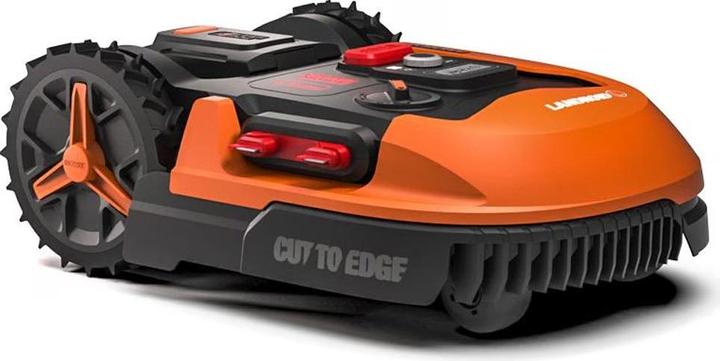

Robot lawnmowers flunk test by consumer organisation «Stiftung Warentest» due to safety issues
Many robotic lawnmowers tested by «Stiftung Warentest» mow well and are easy to use. However, testers criticise the safety issues for children and small animals.
Had the consumer organisation solely tested the robot mowers on their performance, a «good» would have been in order for all three models:
- Worx Landroid M700 Plus WR167E
- Husqvarna Automover 305
- Stihl iRow RMI 422
These automowers manage to cut the grass in the specified maximum areas within an acceptable time, find their way around more complex areas, manage slopes neatly and cut the lawn cleanly. So far, this earns them a «good».
Here are the robotic mowers from the shop, which scored a «satisfactory» and therefore ranked among the best in the test.
Consumer organisation «Stiftung Warentest» also tests other aspects other than a product’s main purpose. For example, the handling. None of the tested robot lawnmowers made much of an impact – neither in a positive nor negative way. The test also involved looking at safety aspects.
The results of the safety test accounted for ten per cent of the overall score. The testers took a closer look at how well the emergency stop button works. They also wanted to find out how the sensors in the mower react to an adult as well as a child test foot getting caught in the blade. In addition, they carried out tests with a child test arm. This was simulated by a wooden stick with a diameter of four centimetres and a length of 55 centimetres, as described in full in the details on the test procedure.
How dangerous are robotic mowers?
In practice, adults are highly unlikely to get their foot caught under a moving robotic lawnmower. The most possible scenario is perhaps if you’re lying on the grass in your garden, fall asleep, the mower starts doing its work and runs over your foot. The situation is more likely and critical if children are involved. Kids are either crawling, with their little arms and legs at the same height as the blades. Or they’re a little older, driven by an urge to explore and find out what goes on under a robot mower. Here’s the good news: none of the tested models injured a child’s foot, as the sensors stopped the operation of the blades in time. The child’s arm, however, «was cut by almost all of them,» writes «Stiftung Warentest.» The only exception in the safety department was the Einhell Freelexo; however, it only delivered a «satisfactory» mowing result.
Protect hedgehogs: only run robot lawnmowers by day
In recent years, manufacturers of robot lawnmowers have worked on the safety of their devices. They now not only protect against serious injuries to feet, hands and arms, but can also prevent injuries to hedgehogs. The rotating blades on many models stop when the resistance is stronger than what you’d expect from blades of grass. Robotic mowers with so-called centrifugal blades tend to be less dangerous for hedgehogs. These models feature smallish, rotating blades that are screwed onto a plate in the mower. Fixed large blades are more dangerous.


In a scientific study, Dr. Sophie Lund Rasmussen of Oxford University researched how dangerous robotic mowers actually are for hedgehogs. The verdict: young animals in particular often suffer serious or even fatal injuries when they encounter a robotic mower. The older, larger and heavier the animals, the less dangerous robotic mowers are for them. Once they’ve reached a certain size, they often don’t get within the range of the blades. In addition, the devices detect the resistance and search for another route or stop the blades.
Nevertheless, the biologist’s recommendation and plea is to refrain from operating robot lawnmowers at dusk or at night. This is because it puts hedgehogs and other nocturnal animals in danger. In other words, it’s best to let your robot helpers drive through the garden during the day. The daylight also means you can keep an eye on them. After all, you wouldn’t want your robot to get up to any mischief in the dark.
By the way, the same recommendation also applies to supposedly high-tech devices that claim to visually detect obstacles and hedgehogs. Dr. Rasmussen’s study provides no evidence that these systems are already working effectively.
Cover image: StihlJournalist since 1997. Stopovers in Franconia (or the Franken region), Lake Constance, Obwalden, Nidwalden and Zurich. Father since 2014. Expert in editorial organisation and motivation. Focus on sustainability, home office tools, beautiful things for the home, creative toys and sports equipment.




